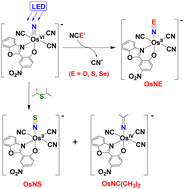Inorg. Chem. Front., 2023, 10,5700-5709
DOI: 10.1039/D3QI01139A, Research Article
DOI: 10.1039/D3QI01139A, Research Article
Yixian Liu, Ruqiang Wu, Yunliang Liu, Peiji Deng, Yaxi Li, Yuanyuan Cheng, Yongchao Du, Zenan Li, Xiong Yan, Naiyun Liu, Zhenhui Kang, Haitao Li
A new CoS/MoS2 heterojunction catalyst is synthetized in which CoS can effectively attach to the (100) surface of MoS2, greatly prompting the absorption of N2.
The content of this RSS Feed (c) The Royal Society of Chemistry
A new CoS/MoS2 heterojunction catalyst is synthetized in which CoS can effectively attach to the (100) surface of MoS2, greatly prompting the absorption of N2.
The content of this RSS Feed (c) The Royal Society of Chemistry










